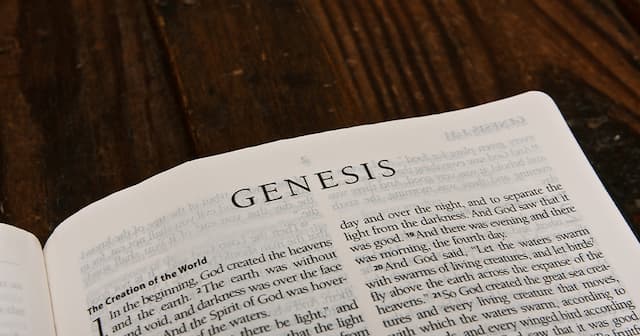Unveiling the Myth of the Abusive Shepherd: A Tale of Allegory & Moral Reflection - The DV Walking Wounded

The myth of the abusive shepherd who breaks the legs of his lambs is a tale that has echoed through time, originating from various cultural and literary traditions. This allegory, while seemingly distant, holds a striking resemblance to the realities of modern-day domestic violence. In this blog posting, we will delve into the origins of this myth and unravel its relevance in understanding and addressing domestic abuse in contemporary society.
Origins of the Myth: The myth of the abusive shepherd can be traced back to ancient fables, folklore, and religious texts. Across different cultures, variations of this narrative have emerged, often serving as cautionary tales or moral allegories. In these tales, the shepherd represents figures of authority or guardianship, while the lambs symbolize the vulnerable and dependent. The preface is this: the shepherd has some unruly lambs. He breaks lamb’s leg to make them dependent solely on the shepherd. The shepherd would be forced to cary the lamb, close to his heart, until the lamb was healed.
NOTE: I have a hard time believing this “parable,” because when a person hurts an animal, that animal remembers and shys away from the abusive party. Also, if the leg was never set and does not heal properly, the sheep would continue to grow, the muscles would atrophy, and the shepherd would eventually not be able to carry the heavy animal, either putting it out of its misery or leaving it to die. Ironic the allegory of this “parable” to domestic abuse, but let me continue laying out the timeline of the myth and its meaning.
Here is the history of this mythical horror:
- Ancient Oral Tradition (Unknown Dates): The origins of the myth likely lie in ancient oral traditions passed down through generations. In pastoral societies, where shepherds played a significant role, stories and allegories about their actions and behaviors would have been common. Shepherds were a common fixture in ancient times, as illustrated in the Bible, as sheep were forms of food, milk, and wool. Jesus Himself used the metaphor of He being the Shepherd, with Us as his flock. It was common and relatable.
- Early Literary References (600 BCE – 200 BCE): The myth begins to appear in written form in ancient texts such as Aesop’s Fables and the works of other ancient Greek and Roman writers. These early iterations often framed the story as a moral lesson about the misuse of power and the consequences of cruelty. “The moral of this story is…” Aesop’s Fable, dealt with it in a twist, as a show of what greed and tyranny can accomplish.
- Medieval European Adaptations (500 CE – 1500 CE): During the Middle Ages, the myth continued to be retold and adapted in various forms across Europe. It was often incorporated into moralizing literature, such as allegorical poems and religious sermons, where it served as a cautionary tale about the dangers of tyranny and oppression.
- Renaissance and Enlightenment (14th – 18th centuries): The myth experienced a resurgence of interest during the Renaissance and Enlightenment periods as scholars and writers revisited classical literature and folklore. It was during this time that the myth began to be analyzed in philosophical and ethical contexts, exploring themes of power, authority, and morality.
- Modern Literary Interpretations (19th – 21st centuries): In more recent centuries, the myth has been reimagined and adapted by authors, poets, and playwrights around the world. It has appeared in various forms of literature, including novels, short stories, and children’s books, often with contemporary twists and interpretations that reflect evolving societal values and concerns.
- Cultural and Artistic Depictions (19th – 21st centuries): Beyond literature, the myth has also been depicted in visual arts, including paintings, sculptures, and other forms of artistic expression. These depictions often emphasize the symbolic elements of the story, exploring themes of innocence, vulnerability, and the abuse of authority. It appeared in a 1955 book entitled What Jesus Said, by Rev Robert Boyd Munger, used as an illustration later in a popular sermon by Bro. William Marrion Branham entitled “The Good Shepherd of the Sheep.” In 1979, Rev Paul Lee Tan included it in this book The Encyclopedia of 7700 Illustrations. 1980’s sermons ran rampant with that “fable.” Many times it was used as a device to illustrate children “obeying” their parents, with their “best interests at heart.” This really makes me want to vomit!
- Contemporary Relevance (21st century): In the digital age, the myth continues to resonate with audiences as a timeless allegory with profound moral implications. It has been adapted into various media formats, including films, animations, and digital storytelling platforms, reaching new audiences and sparking discussions about power dynamics and ethical conduct in society.
Despite its ancient origins, the myth of the abusive shepherd holds a poignant relevance in understanding modern-day domestic violence. In domestic abuse situations, perpetrators often exert control and dominance over their victims through various forms of coercion, manipulation, and violence. Thus, they form a trauma bond through inflicting violence then acting as “protectors” of the person that they were violent toward.
Similar to the shepherd’s justification for breaking the legs of the lambs, abusers in domestic violence situations may rationalize their actions under the guise of love, protection, or discipline. They employ tactics designed to instill fear, dependency, and compliance in their victims, perpetuating a cycle of abuse and control. This “parable” makes the victim a “sheep” of sorts, indicating how abusers see them as “dumb animals that do not know better.” The shepherd in this myth, really presents more as a wolf in disguise. That is why I also cling to this, from Matthew 10:16: “Behold, I send you out as sheep in the midst of wolves. Therefore be wise as serpents and harmless as doves.” Victims, be wise, and silently leave. Violence begets violence. Know your wolf, for they do NOT have your best interest at heart. Our Shepherd has spoken…beware of false shepherds…
Furthermore, just as the bystanders in the myth confront the shepherd’s actions, so too must society reckon with the prevalence of domestic violence in our midst. All too often, instances of abuse occur behind closed doors, hidden from public view. Yet, like the witnesses in the myth, we have a moral imperative to speak out against injustice and offer support to those in need. We. Must. Believe. The. Victim. We must not only believe, we must offer resources.
In confronting the parallels between the myth of the abusive shepherd and modern-day domestic violence, it becomes evident that awareness, education, and intervention are essential in combating this pervasive issue. By fostering a culture of empathy, respect, and accountability, we can work towards dismantling the systems of power and control that enable abuse to thrive. We must also not justify the abusive “shepherd’s” actions.
Efforts to address domestic violence must encompass not only support for survivors but also prevention strategies aimed at challenging harmful attitudes and behaviors. This includes promoting healthy relationship dynamics, advocating for gender equality, and holding perpetrators accountable for their actions. We must also recognize that abusers are not always intimate partners. They can be [employer] management, parents, clergy, “friends”…anyone in a power role, really.
Finally, the myth of the abusive shepherd serves as a timeless reminder of the dangers of unchecked power and the importance of empathy and solidarity in combating oppression. By recognizing its parallels to modern-day domestic violence, we are better equipped to confront this societal scourge and strive towards a future where all individuals are treated with dignity, respect, and compassion.
We must eradicate this disgusting fictional “parable” from illustrating ANYTHING. Jesus is the Shepherd. We know our Master’s voice and must follow Him. He would never harm us intentionally. Those who love us, will NEVER inflict violence upon us.
Love and light! <3







